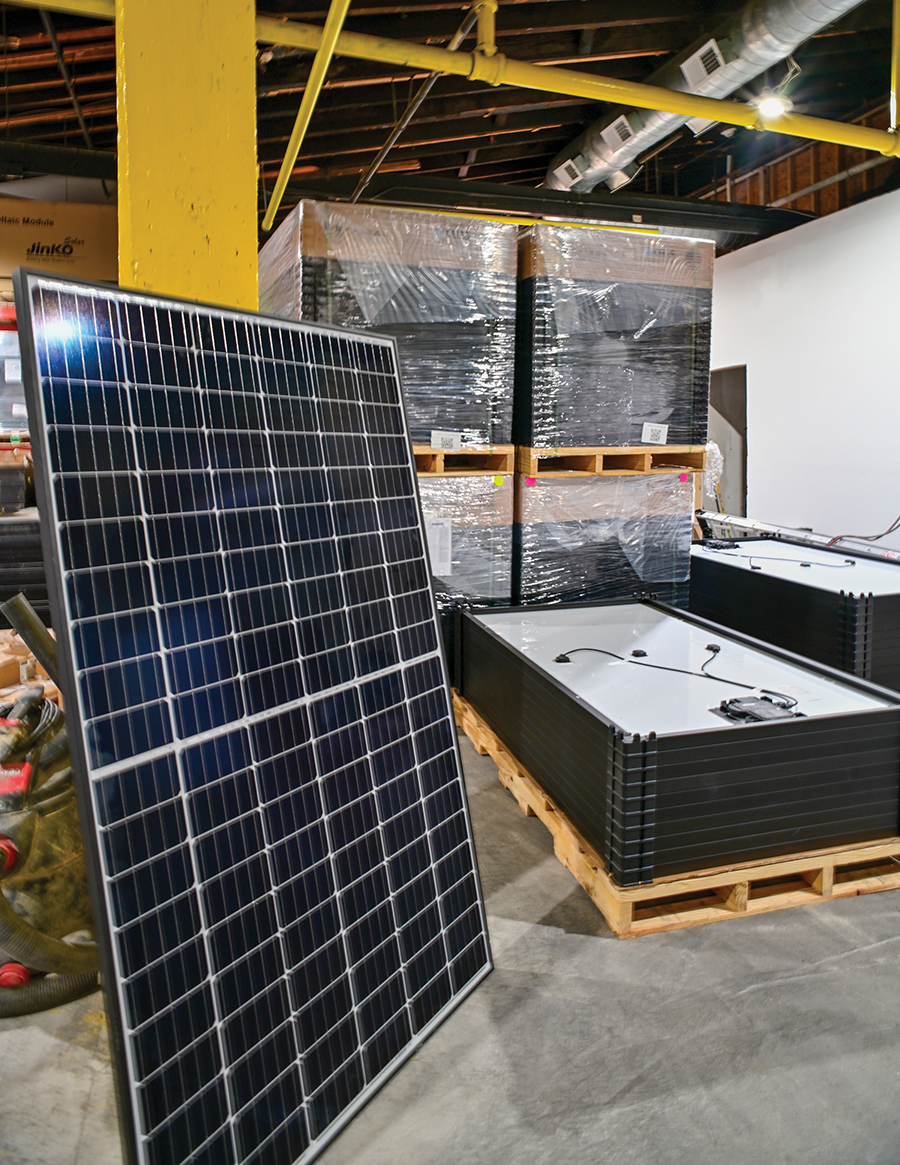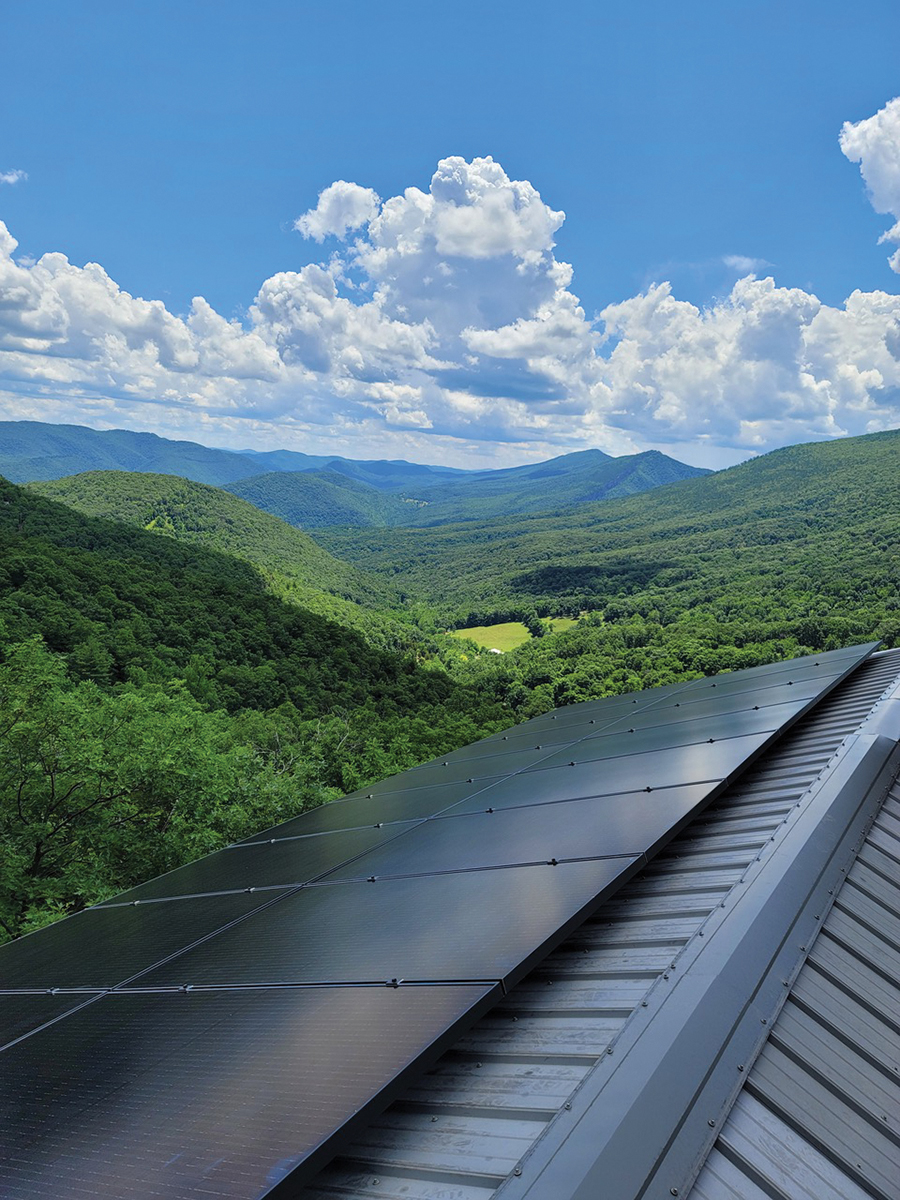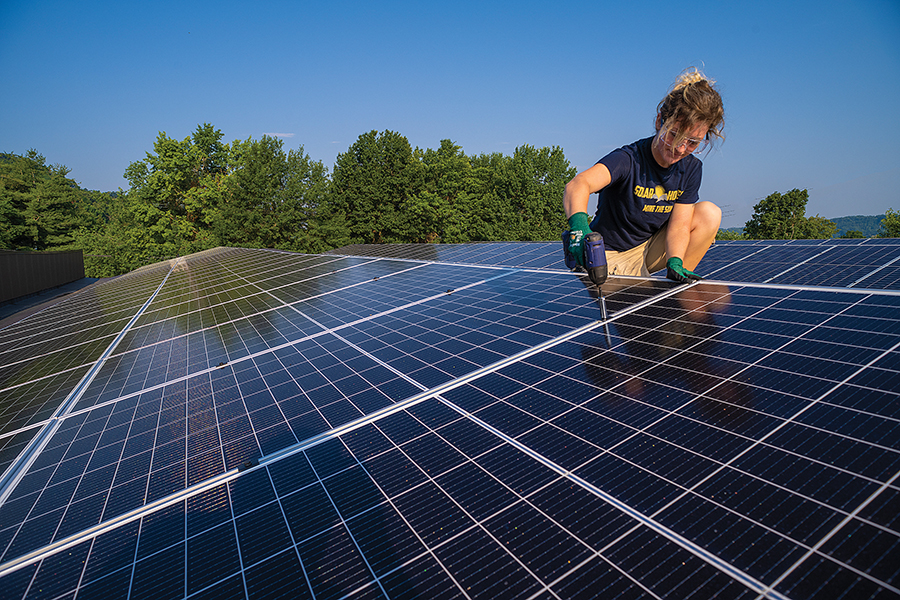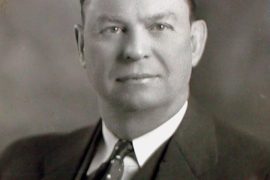An innovative company based in Huntington has grown to become one of the largest solar companies in Central Appalachia. Today, it is mining the sun and providing low-cost energy solutions for homeowners, small businesses and nonprofits.
By Michael Friel
HQ 114 | SUMMER 2021
For Dan Conant, something was missing from the equation.
Resource-rich West Virginia had been helping power the nation for more than a century while much of the wealth it generated flowed out of state. Meanwhile, the most abundant energy source, the sun — reliable, easily accessible and environmentally friendly — went virtually untapped.

Conant, a Mountain State native with a passion for solar energy, a plan of action and a desire to return home, moved back to Shepherdstown in 2013 and launched Solar Holler. His mission was simple: offer affordable, clean energy solutions that create sustainable jobs and build stronger communities in central Appalachia while keeping energy dollars at home. It was, for Conant, a way to “make the transition that I wanted to see happen.”
Today, Solar Holler has grown into one of the largest solar companies in central Appalachia. Its panels capture the sun’s energy from rooftops and open spaces across West Virginia, eastern Kentucky, southern Ohio and western Maryland. The company is on track to complete 350 to 400 installations this year — pretty remarkable when you consider that there were just 800 total solar installations in West Virginia as of 2020.
There are more than 40 Solar Holler systems in Huntington proper and nearly 100 in Cabell and Wayne counties combined. Although many are residential installations, an increasing number of social service agencies and nonprofits — including Habitat for Humanity, Harmony House and Coalfield Development — have joined the solar revolution.

At Coalfield’s West Edge Factory, a business incubator and mixed-use facility where Solar Holler maintains a warehouse, the state’s largest nonprofit solar installation is underway. Eventually, 376 panels atop the sprawling former manufacturing plant will provide 150,550 kilowatt hours of electricity annually, saving more than $323,000 over the lifetime of the project, said Jacob Hannah, conservation coordinator for Coalfield Development and point person on the project.
Those cost savings will enable the nonprofit to reinvest in the community — exactly the type of dynamic Conant envisioned when he founded Solar Holler.
“The savings we will generate from this installation will not only help reduce the operating costs of our business incubation, workforce trainings and overall operations, but also serve as a template for how Appalachians can learn from and utilize renewable resources as a tool to compete and succeed in the open market,” Hannah said. “This installation has already leveraged over 20 renewable energy training certifications for local folks who had no prior experience in solar, and we want to continue those trainings in the future for anyone who would be interested.”

From the very beginning, Conant and Solar Holler have done things differently, deploying innovative approaches to turn obstacles into opportunities.
To pay for the first installation project at Shepherdstown Presbyterian Church, Conant launched a crowdfunding initiative. Nearly 100 community members installed energy conservation devices on their hot water heaters for which they were paid $100 each by a private company. The residents then donated their rebates to pay for the church’s solar installation.
By the time that installation was complete, another problem presented itself.
“Within a week of cutting the ribbon on that first project with the Shepherdstown church, we got so much demand around the state that we outstripped the capacity of everybody who had ever installed a solar panel,” Conant explained.
He reached out to Brandon Dennison, founder and CEO of Coalfield Development in Wayne County, and together they pioneered the first solar training and apprenticeship program in West Virginia. Apprentices received training in solar technology and hands-on installation experience while also earning associate degrees. Eight of the trainees became full-time Solar Holler employees, helping bolster the solar workforce in southern West Virginia.

Solar Holler continues to leverage innovative — even highly unconventional — approaches to workforce solutions. To ensure a well-trained, highly skilled team of electricians and technicians, the management team at Solar Holler made the decision to join the International Brotherhood of Electrical Workers (IBEW).
“We were the third solar company east of the Mississippi River to unionize, and we were the first that did it with a focus on residential solar instead of utilities,” Conant explained. “Our attorneys told us they had never seen a case before where the founder of a company was the one doing the union organizing.”
As groundbreaking as the executive-level push to unionize was, providing employees stock options after a year of service underscores the company’s enduring commitment to its people.
“One of the things we’ve been really mindful of and been pushing for is to ensure that the folks who are actually building stuff on the ground are benefiting too,” Conant said. “We’re really proud of that.”
Arguably the hallmark of Solar Holler’s success has been its unconventional financing model, which makes solar energy accessible and affordable for middle- and lower-income homeowners as well as small businesses and nonprofits. Solar Holler’s leadership works with nontraditional financiers to offer low-interest loans over 10 to 25 years with no upfront costs, while also helping homeowners take advantage of federal tax credits.

“Whenever we’re designing a system, we crunch all the numbers for folks and do a sunshine analysis, so we know how much energy is hitting every square inch of a roof every hour of the year,” Conant said. By analyzing that information, Solar Holler provides homeowners, businesses and organizations detailed estimates about how much they can reduce energy bills by going solar.
“For most folks we work with in the Huntington area, the amount they are paying for solar is less than what they were paying the utility company,” Conant said. “Our mission all along has been to make solar more affordable than grid power, and that’s what we’ve done.”





